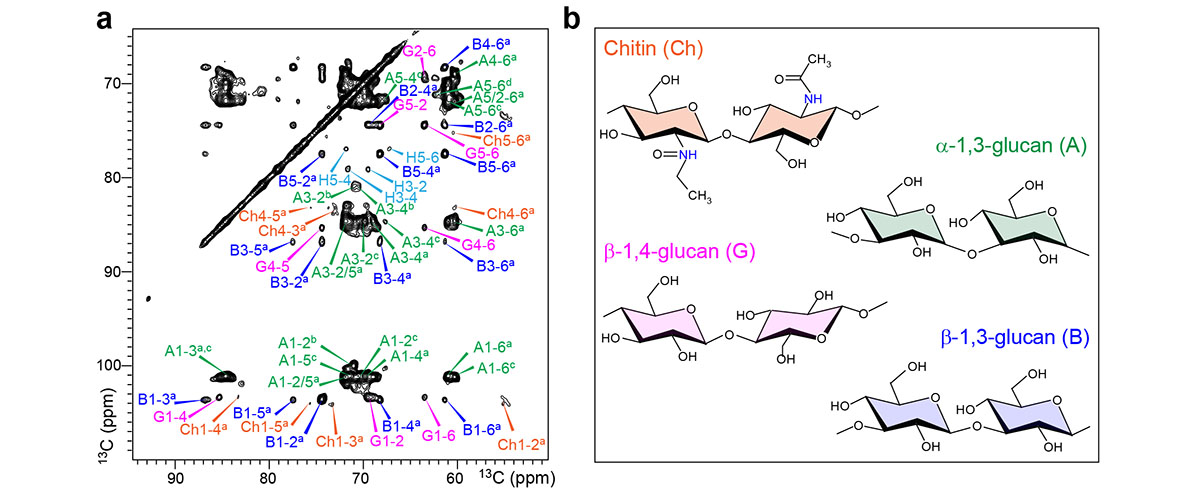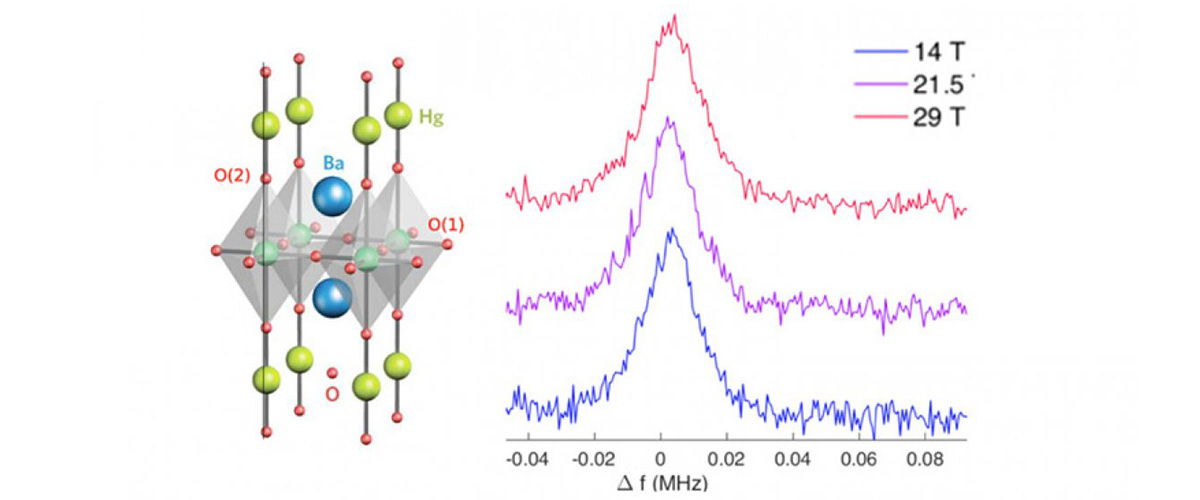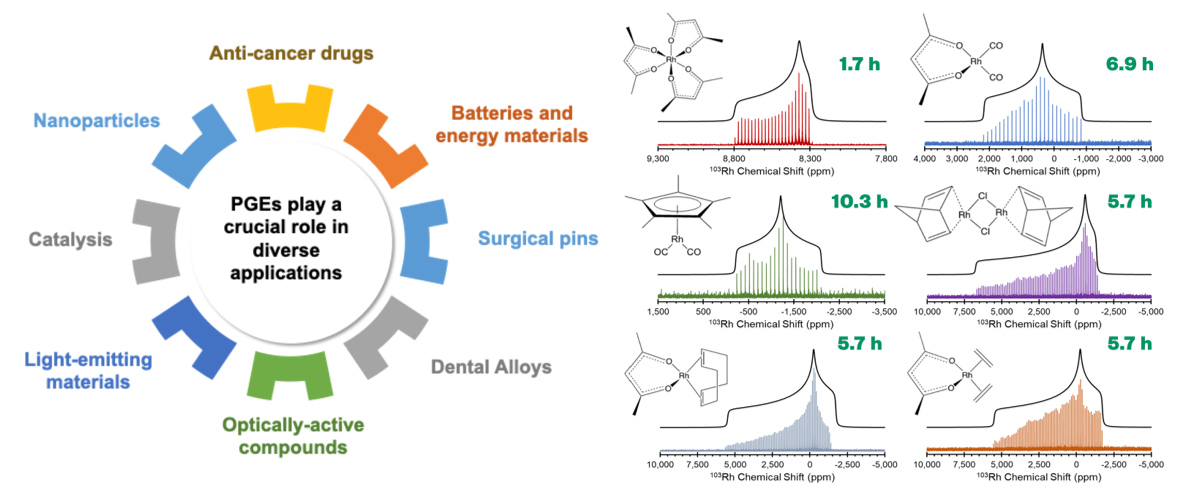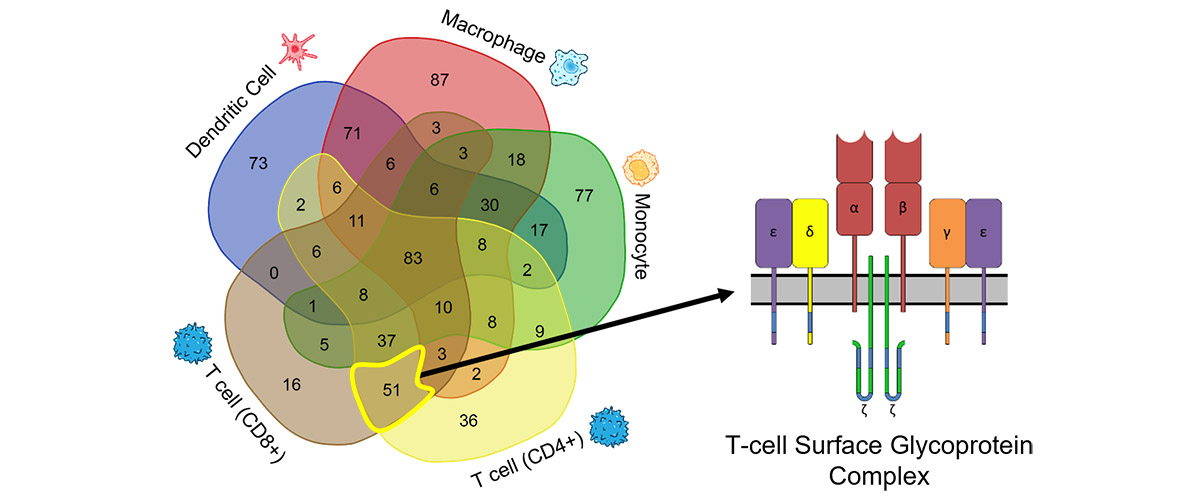What did scientists discover?
This collaboration determined the three-dimensional architecture of the carbohydrate-rich cell wall in native and intact fungi. By using nuclear magnetic resonance (NMR) and dynamic nuclear polarization (DNP), scientists can now elucidate how carbohydrates and proteins are packed to form the cell walls of the most prevalent and deadly fungi.
Why is this important?
Life-threatening infections by pathogenic fungi have evolved into a major threat to human health, impacting millions of people every year. Knowledge gained from these experiments provides the molecular basis for engineering more effective antifungal drugs.
Who did the research?
Xue Kang1, Alex Kirui1, Artur Muszyński2, Malitha C Dickwella Widanage1, Adrian Chen1, Parastoo Azadi2, Ping Wang3, Frederic Mentink-Vigier4, Tuo Wang1
1Louisiana State University; 2University of Georgi; 3LSU Health Sciences Center; 4National MagLab.
Why did they need the MagLab?
The fungal cell wall is a highly complex composite of many different biomolecules. A successful determination of the structures in the fungal cell wall requires a combination of the increased resolution from high-field magnets and the NMR signal sensitivity boost resulting from the instruments and expertise available through the MagLab’s unique DNP user program.
Details for scientists
- View or download the expert-level Science Highlight, Uncover the secrets of fungal cell wall architecture
- Read the full-length publication, Molecular architecture of fungal cell walls revealed by solid-state NMR, in Nature communications
Funding
This research was funded by the following grants: G.S. Boebinger (NSF DMR-1157490, NSF DMR-1644779); T. Wang (NSF OIA-1833040).
For more information, contact Frederic Mentink-Vigier.






